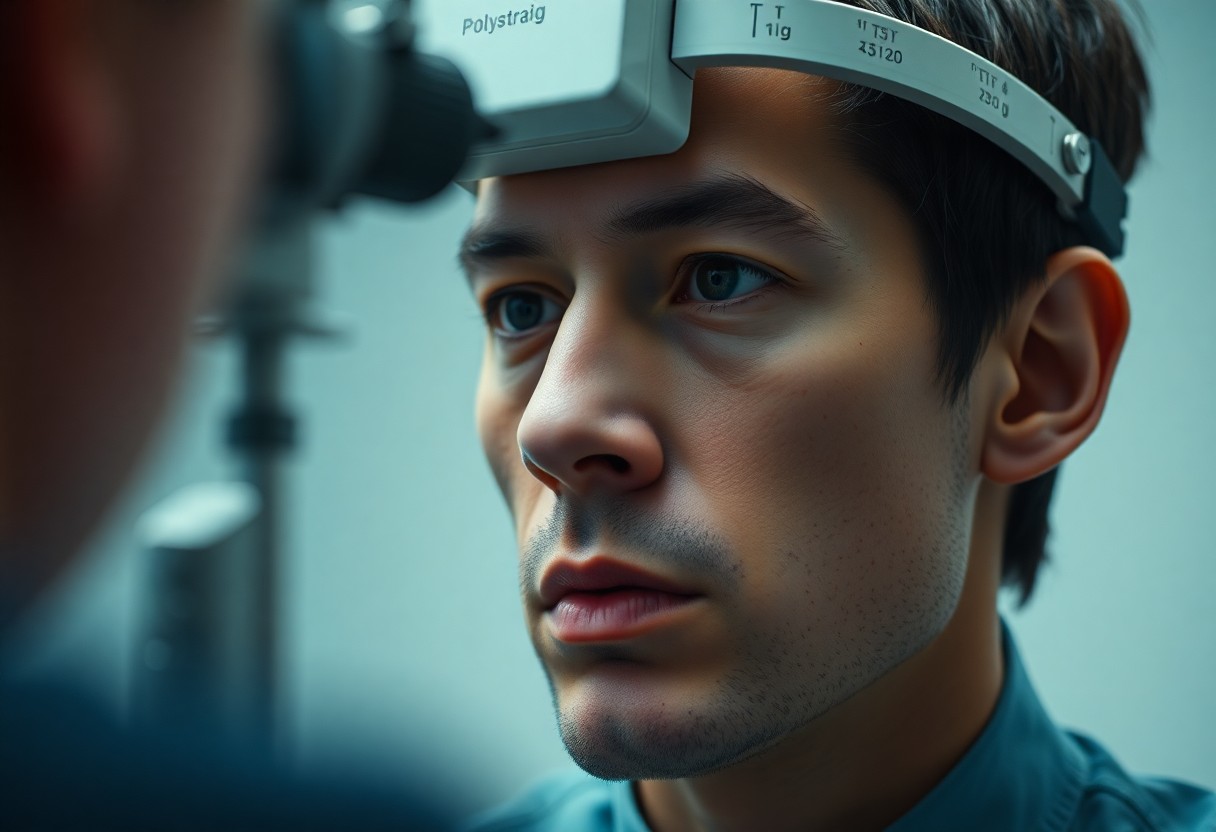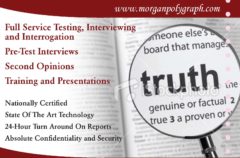
You can significantly enhance your lie detection capabilities by integrating facial expression recognition technology into traditional polygraph testing. This method allows you to analyze micro-expressions that reveal emotional responses often hidden during questioning. By focusing on non-verbal cues, you can gain a deeper understanding of a subject’s true feelings, improving the accuracy of your assessments. Embracing this combination of advanced technology and psychological insight can lead to more reliable results in your investigative efforts.
Key Takeaways:
- Facial expression recognition technology can enhance the accuracy of polygraph tests by providing additional context to physiological responses.
- Integrating real-time facial analysis with traditional polygraph metrics can lead to a more comprehensive understanding of a subject’s truthfulness.
- Training examiners to interpret facial cues alongside polygraph results can improve their ability to detect deception more effectively.
1. Use facial expressions for enhanced truthfulness assessment.
2. Combine technology with traditional polygraph techniques for accuracy.
3. Train examiners on recognizing subtle facial cues effectively.
4. Analyze micro-expressions for deception indicators in subjects.
5. Integrate machine learning to refine expression recognition algorithms.
6. Conduct consistent practice to improve interpretation skills over time.

Understanding Traditional Polygraph Testing
As you explore polygraph testing, it’s vital to grasp the fundamentals of how these devices work. Traditional polygraph testing primarily measures physiological responses, such as heart rate, blood pressure, respiration, and skin conductivity, which can indicate stress or deception during questioning. By analyzing these physiological changes, the examiner attempts to determine the truthfulness of your responses to specific inquiries.
Basic Principles and Methodology
The traditional polygraph test typically involves a pre-test interview, during which the examiner establishes a baseline for your physiological responses. You then undergo a series of questions while connected to the polygraph, designed to detect any significant variations in your physiological measurements. The examiner interprets these patterns to assess whether you may be lying.
Current Limitations and Challenges
Understanding the limitations of traditional polygraph testing is vital for a comprehensive evaluation. While the polygraph aims to discern truth from deception, it faces several significant challenges that can impact its reliability.
Plus, factors such as anxiety, medications, or even individual differences in physiology can produce false positives or negatives, complicating the interpretation of results. Additionally, polygraph testing is often criticized for its subjectivity, relying on the examiner’s judgment and experience. As such, accurate and reliable assessments may be difficult to achieve without considering these limitations, which underscores the need for improved methodologies that integrate advanced technologies, such as facial expression recognition.
Facial Expression Recognition Technology
Some advancements in Lie to my face: An electromyography approach to the study… have allowed for improved detection of deceptive behaviors through facial expression recognition technology. Leveraging algorithms and machine learning, this technology analyzes subtle and overt expressions, providing valuable insights into emotional states that could indicate truthfulness or deceit during polygraph testing. This integration enhances the reliability of results and offers a deeper understanding of the psychological aspects of lying.
Core Components of Facial Analysis
By focusing on various components such as facial features, movements, and muscle activity, facial analysis allows you to accurately assess expressions that may suggest deception. These core elements include the study of micro-expressions, macro-expressions, and facial symmetry. Each component plays a vital role in the overall analysis, enabling you to discern between genuine emotions and those that are fabricated.
Microexpression Detection Systems
Across the field, microexpression detection systems have gained attention for their ability to reveal fleeting, involuntary facial expressions that occur within fractions of a second. These microexpressions can signal concealed emotions, making them significant indicators during polygraph testing.
Even with their brief duration, microexpressions provide critical insights into underlying emotions that might contradict spoken statements. By employing advanced software and video analysis techniques, these systems can detect emotional leakage that often goes unnoticed. Understanding and interpreting these subtle cues can significantly enhance your proficiency in lie detection and improve the overall accuracy of polygraph tests, potentially leading to more effective investigative outcomes.
Integration of Facial Recognition in Polygraph Testing
Unlike traditional polygraph methods that rely solely on physiological indicators, the integration of facial expression recognition enhances the accuracy of lie detection. By analyzing micro-expressions and facial cues alongside physiological data, you gain a more comprehensive understanding of a subject’s emotional state. This multidisciplinary approach allows for a deeper investigation into deceptive behavior, making your polygraph tests significantly more reliable and efficient.
Hardware and Software Requirements
Facial expression recognition requires specific hardware and software to effectively analyze facial data during polygraph sessions. You need high-resolution cameras that capture subtle facial movements, along with robust software capable of processing and interpreting this data in real-time. By investing in quality equipment, you ensure that your tests provide more accurate assessments.
Calibration and Synchronization Protocols
To achieve optimal results, proper calibration and synchronization protocols must be established. These protocols ensure that both the facial recognition system and the polygraph instruments operate in harmony, providing you with coherent data for analysis.
Understanding the importance of calibration and synchronization is imperative for achieving accurate results. When you align the timing and responsiveness of your facial recognition software with the polygraph system, you minimize errors in data interpretation. This process enables you to obtain a clearer picture of a subject’s emotional and physiological states, enhancing the effectiveness of your lie detection efforts. Always ensure that your devices are regularly updated and calibrated to maintain the highest standards of performance.
Enhanced Detection Methodology
Not all polygraph testing techniques are created equal. By integrating facial expression recognition into polygraph testing, you can greatly enhance accuracy. Utilizing advanced methodologies like those detailed in DeepLie: Detect Lies with Facial Expression (Computer Vision), you tap into the subtleties of human emotion that traditional methods might miss, leading to more reliable outcomes.
Combined Data Analysis Approach
Around the globe, experts are recognizing the synergy between polygraph results and facial analysis. By merging physiological data with real-time facial expression analysis, you enable a more comprehensive understanding of truthfulness. This combination allows for greater insights, increasing the chances of detecting deception during testing.
Real-time Processing Techniques
Processing accurate facial expression data is imperative for timely analysis during polygraph tests. Advanced algorithms now allow for swift recognition of micro-expressions, giving you an edge in lie detection. These techniques ensure that you can react and interpret emotional cues instantaneously, making your findings more robust and actionable.
Data interpretation is enhanced through continuous monitoring of facial cues, providing real-time feedback during polygraph sessions. With the right tools, you can analyze emotional fluctuations that might indicate deceit, offering a powerful layer to your testing methodology. Integrating real-time processing ensures that you are working with up-to-date and relevant information, leading to improved confidence in your findings.
Validation and Accuracy Assessment
For any method to be effective, it is necessary to evaluate its accuracy and reliability. In the context of facial expression recognition in polygraph testing, validation involves rigorous assessments to ensure that the system effectively distinguishes between truthful and deceptive responses. This process not only enhances the credibility of results but also builds confidence in employing these techniques in lie detection.
Statistical Analysis Methods
Among the various statistical analysis methods employed, regression analysis and machine learning algorithms play pivotal roles in determining the performance of facial expression recognition systems. These techniques help quantify the relationships between observed facial expressions and the outcomes of polygraph tests, allowing for robust conclusions regarding accuracy and efficacy.
Error Rate Evaluation
Accuracy is a significant metric in evaluating the performance of lie detection systems, and error rate evaluation focuses on identifying instances of false positives and false negatives. Reducing these errors is necessary to ensure reliable outcomes during polygraph testing.
Even a small error rate can have significant consequences in lie detection. You must fully understand that high false positive rates can lead to incorrect accusations and potentially damaging outcomes for individuals wrongly identified as deceptive. Conversely, a high false negative rate can allow actual deception to go undetected, undermining the integrity of the testing process. Continual refinement of facial expression recognition technology, supported by ongoing evaluation of its performance metrics, is necessary for minimizing these risks and ensuring that you can trust the results obtained from polygraph tests.
Implementation Guidelines
Despite the potential benefits of integrating facial expression recognition into polygraph testing, careful implementation is necessary. Begin by assessing your current polygraph methodologies and consider how facial recognition technology can enhance your accuracy. Establish clear protocols for data collection and analysis to ensure compliance with ethical standards and privacy regulations. Additionally, invest in reliable software that is compatible with existing systems to facilitate smoother integration.
Examiner Training Requirements
Below are several key training requirements for examiners utilizing facial expression recognition technology. You should ensure that all examiners are well-versed in both traditional polygraph techniques and the use of facial recognition software. This dual knowledge base will enhance the validity of your tests and ensure that examiners can accurately interpret the nuanced signals that may indicate deception.
Testing Environment Optimization
Testing environments greatly influence the reliability of your results. The physical setting in which you conduct polygraph examinations should be structured to minimize distractions and foster rapport with the subject. The area should be quiet, well-lit, and free from interruptions, as any external noise can affect both the exam and the readings of your technology. You should also consider factors like room temperature, seating comfort, and the subject’s psychological state, as these elements collectively impact their facial expressions and responses.
With optimization, you can create an ideal atmosphere for your tests. Control the lighting to ensure that your facial recognition software can accurately capture expressions. Additionally, choose seating arrangements that promote comfort and openness, encouraging subjects to relax and be more genuine in their responses. By fostering trust and comfort, you enhance the likelihood of obtaining authentic reactions, which significantly boosts the accuracy of your readings and overall test outcomes.
Summing up
Ultimately, by integrating facial expression recognition into polygraph testing, you can enhance the accuracy and reliability of lie detection. Understanding the subtle facial cues tied to emotional responses allows you to interpret the results more effectively. Combining this technology with traditional methods provides a comprehensive approach to assessing truthfulness. As you adopt these strategies, you’ll improve your skills in lie detection, leading to more informed conclusions in your evaluations.
FAQ
Q: How can facial expression recognition enhance the accuracy of polygraph testing?
A: Facial expression recognition can significantly enhance the accuracy of polygraph testing by providing an additional layer of behavioral analysis. It allows examiners to observe micro-expressions and involuntary facial movements that may indicate deception or emotional responses that the subject may try to conceal. By integrating this technology with traditional polygraph methods, examiners can better correlate physiological responses with genuine and involuntary emotional expressions, leading to a more comprehensive assessment of the subject’s truthfulness.
Q: What types of facial expressions are most helpful in detecting deception during polygraph tests?
A: Various facial expressions can be indicative of deception, including subtle cues like eyebrow raises, lip pressing, or brief smiles that may not correspond with the verbal content of the subject’s responses. Emotional expressions, such as surprise or fear, can sometimes be telling; for example, when a person feels cornered during questioning. Understanding the nuances of these expressions can help examiners differentiate between genuine emotion and those that are potentially fabricated or inauthentic, providing a deeper insight into the subject’s psychological state.
Q: Are there specific technologies or software tools available for incorporating facial expression recognition into polygraph testing?
A: Yes, several technologies and software tools have been developed to integrate facial expression recognition into polygraph testing. These tools typically use advanced algorithms and artificial intelligence to analyze facial movements and expressions in real-time. Some systems can be used in conjunction with existing polygraph equipment, allowing examiners to simultaneously monitor physiological data and facial cues. Additionally, research continues to evolve in this field, with developments aimed at increasing the reliability and validity of these tools for both research and practical applications in interrogation settings.
